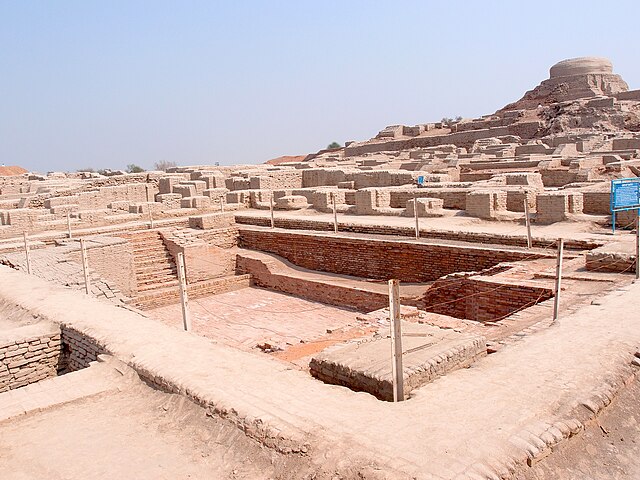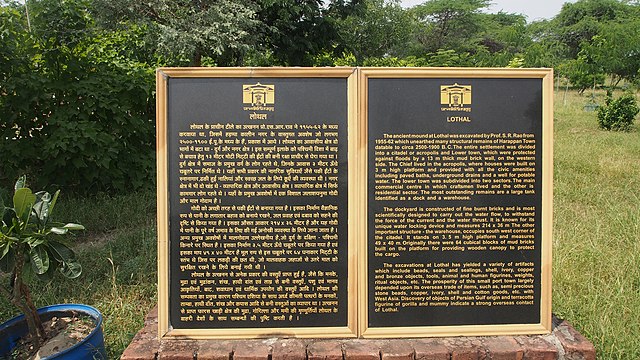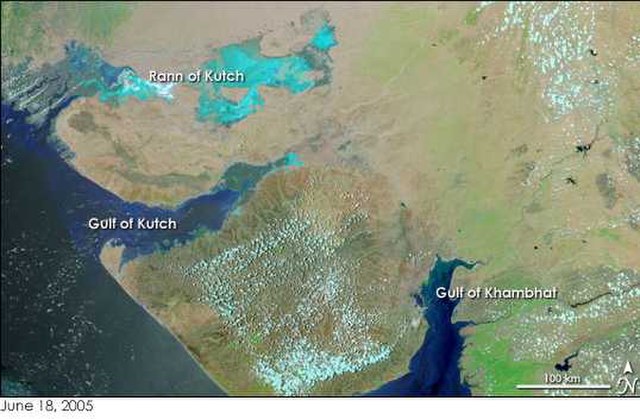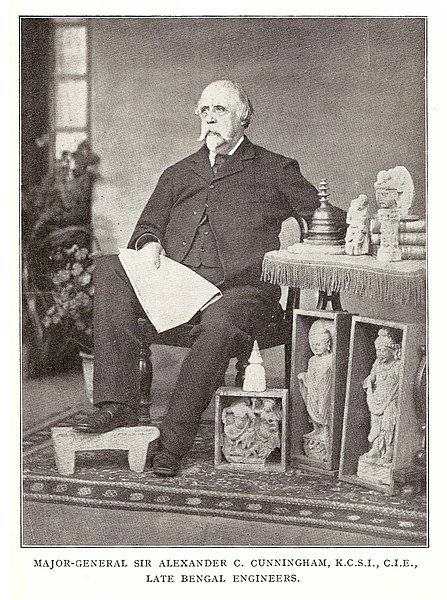Lothal was one of the southernmost sites of the ancient Indus Valley civilisation, located in the Bhal region of the Indian state of Gujarat. Construction of the city is believed to have begun around 2200 BCE.
Archaeological remains of washroom drainage system at Lothal
Lothal Archaeological information
To the northwest of Lothal lies the Kutch (see also Dholavira) peninsula, which was a part of the Arabian Sea until very recently in history. Owing to this, and the proximity of the Gulf of Khambhat, Lothal's river provided direct access to sea routes. Although now sealed off from the sea, Lothal's topography and geology reflects its maritime past.
Bathing platform and communal drain, acropolis
Indus Valley Civilisation
The Indus Valley Civilisation (IVC), also known as the Indus Civilisation, was a Bronze Age civilisation in the northwestern regions of South Asia, lasting from 3300 BCE to 1300 BCE, and in its mature form 2600 BCE to 1900 BCE. Together with ancient Egypt and Mesopotamia, it was one of three early civilisations of the Near East and South Asia, and of the three, the most widespread, its sites spanning an area from much of modern day Pakistan, to some parts of northwestern India and northeast Afghanistan. The civilisation flourished both in the alluvial plain of the Indus River, which flows through the length of Pakistan, and along a system of perennial monsoon-fed rivers that once coursed in the vicinity of the Ghaggar-Hakra, a seasonal river in northwest India and eastern Pakistan.

Excavated ruins of Mohenjo-daro, Sindh province, Pakistan, showing the Great Bath in the foreground. Mohenjo-daro, on the right bank of the Indus River, is a UNESCO World Heritage Site, the first site in South Asia to be so declared.
Miniature votive images or toy models from Harappa, c. 2500 BCE. Terracotta figurines indicate the yoking of zebu oxen for pulling a cart and the presence of the chicken, a domesticated jungle fowl.
Major sites and extent of the Indus Valley Civilisation
Alexander Cunningham, the first director general of the Archaeological Survey of India (ASI), interpreted a Harappan stamp seal in 1875.







